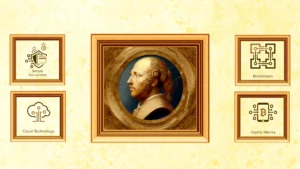The Abraham Accords: A Two-Year Assessment
Next month marks the two-year anniversary of the signing of the historic Abraham Accords. On September 15, 2020, United States President Donald Trump hosted the Minister of Foreign Affairs and International Cooperation of the United Arab Emirates (UAE) H.H. Sheikh Abdullah bin Zayed Al Nahyan, Bahrain’s Foreign Minister Dr. Abdullatif bin Rashid Al Zayani, and Israel’s Prime Minister Benjamin Netanyahu at the White House.
The Abraham Accords constituted the first breakthrough for regional peace in more than a quarter century since the 1993 Oslo Accords. Founded upon shared strategic, economic and trade interests between the parties, they established peace, diplomatic and trade relations, and a normalization of bilateral ties between the countries, with Sudan and Morocco soon joining the circle of peace.
With more Arab nations expected to sign on, the unprecedented road to peace could unlock business potential and create new opportunities for trade and investment not only for the Arab Gulf states, but across the Middle East and North Africa (MENA) region.
The hope and promise encapsulated in that diplomatic achievement have borne fruit in several arenas, not least in the economic sphere. This is particularly the case between Israel and the UAE, given that both countries are strong engines of technology-driven development based on their relatively open economies, startup and innovation cultures and venture capital experience.
As a case in point, both countries signed a recent Free Trade Agreement (FTA) on May 31, 2022, with the stated goal of increasing annual bilateral trade to more than $10 billion over the next five years, more than 10 times the figure recorded in 2021.
The FTA includes a customs exemption on 98 percent of bilateral trade encompassing sectors such as food, agriculture, cosmetics, medical equipment and medication. The trade potential in these sectors is great given that Israel exported $58.8 million in products to the UAE in 2020, according to data from the Observatory of Economic Complexity (OEC). Top exports included diamonds, telephones, and gas turbines.
The UAE, on its part, exported $120 million to Israel in 2020, with the main exports encompassing diamonds and broadcasting equipment. One year later, in 2021, Israeli exports to the UAE reached $384.47 million, while UAE exports to Israel reached $885 million, according to Israeli government data. In addition to these trade flows, the United States, Israel, and the UAE established a $3 billion fund—the Abraham Fund—to promote economic cooperation and growth in the region with the purposes of job creation and raising the regional standard of living.
Which future economic potential does the Abraham Accords then hold? While it is complex to develop scenarios in this field, a study by the Rand Cooperation offers an optimistic vision. Based on the premise that the Accords could grow to potentially include ten Muslim-majority nations in the years to come, with deeper economic integration across the MENA-region, the four Arab signatories could potentially gain as many as 150,000 new jobs, expanding to four million new jobs and $1 trillion in new economic activity over a decade, according to the assessment.
Irrespective of economic scenarios, it is safe to say that the Abraham Accords hold the continued potential to serve as the foundation for a comprehensive peace process across the MENA-region – away from conflict and toward a shared vision of economic prosperity – by demonstrating the tangible, real-world benefits of people-to-people ties, trade, commerce, and mutual cooperation.
Dr. Daniel Schatz
Dr. Schatz is a Visiting Scholar at Georgetown University and a Non-Resi








